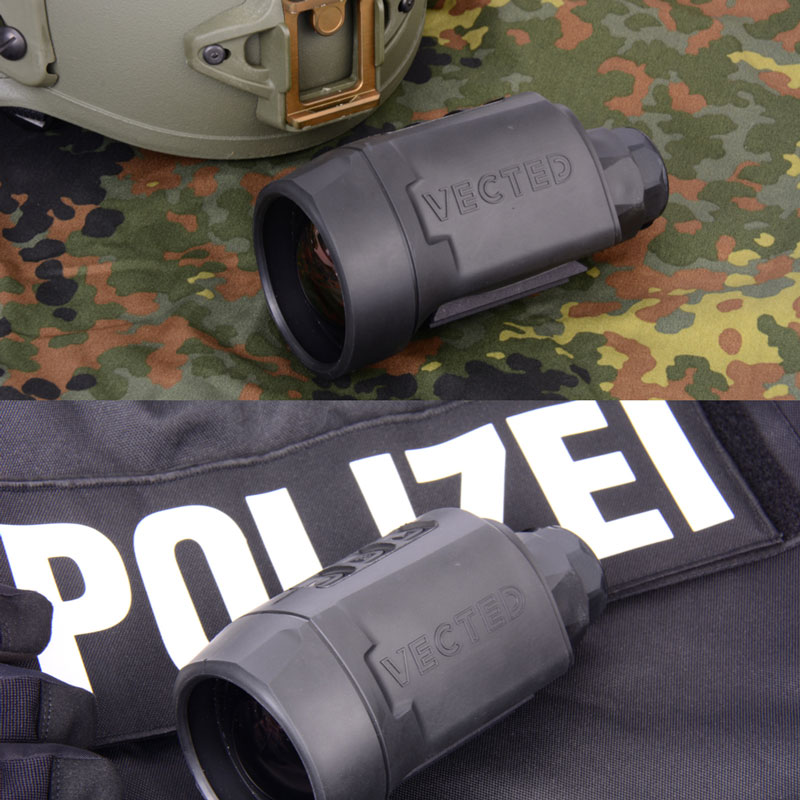In addition to their very good detection performance, our thermal imaging devices are characterized by their compact size and low weight. Cooled thermal devices, on the other hand, are often larger and heavier. What are the differences and when does which device make sense?
First of all, both variants have their ranges of use, depending on the requirements. Cooled sensors are more sensitive and therefore allow the use of more compact and therefore lighter and cheaper lenses at high magnifications (focal length approx. > 120 mm). Uncooled sensors require significantly larger and more expensive objectives at the same high magnifications. Therefore, uncooled devices have a weight and cost advantage at low magnifications, and the reverse is true at high magnifications.
Uncooled thermal imagers, such as our 640 series, are ready for use in a few seconds, while cooled imagers require several minutes to bring the sensor to the necessary operating temperature of less than -170°C. In order to reach these low temperatures, a complex, maintenance and energy-intensive cooling technology is required. The latter in turn requires corresponding batteries, which together with the cooling technology makes the devices significantly heavier and larger.
The application possibilities of uncooled thermal imaging devices are thus more flexible and more diverse than those of their cooled relatives.



